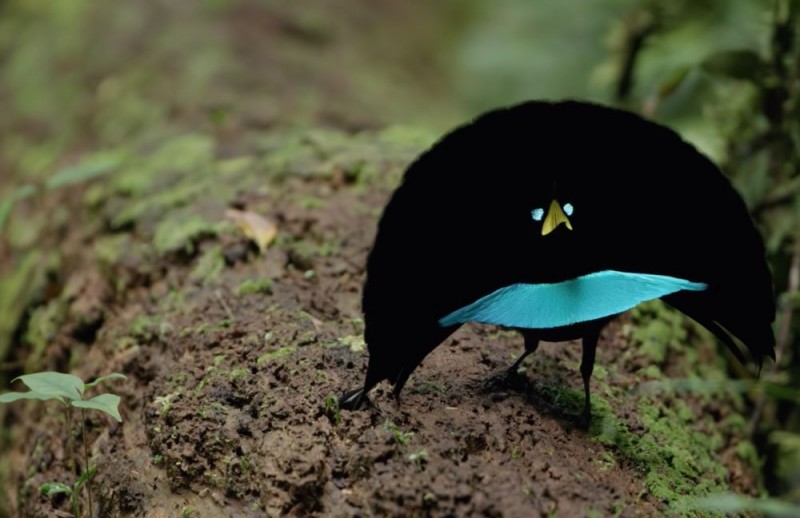
Birds of paradise are renowned for their extraordinary beauty, and it's not just their vibrant plumage that captivates us. These avian wonders have also gained fame for their remarkable courtship dances, which are elaborate, mesmerizing, and utterly unique. In this article, we will delve into the fascinating world of dancing birds of paradise, exploring the purpose behind their intricate displays and shedding light on the wonders of their behavior.
Introduction
Birds of paradise are a group of avian species primarily found in the rainforests of New Guinea and its surrounding islands. These birds are famous for their stunning appearance, with an array of colorful feathers, intricate patterns, and unique shapes. However, it is their courtship dances that truly set them apart, captivating researchers, nature enthusiasts, and photographers alike.
The Birds of Paradise: A Brief Overview
The birds of paradise belong to the family Paradisaeidae, comprising over 40 different species. Each species possesses its own distinct characteristics, including variations in size, coloration, and dance style. Some of the most well-known species include the Greater Bird of Paradise, King Bird of Paradise, and the Superb Bird of Paradise.
The Importance of Courtship Displays
Courtship dances play a crucial role in the birds of paradise mating process. These displays serve as a means for male birds to attract the attention of females and showcase their genetic fitness. The more captivating and skillful the dance, the higher the chances of successful mating.
The Evolutionary Significance
The elaborate courtship dances of birds of paradise have evolved over millions of years. The main driving force behind this evolution is sexual selection. Female birds, being the choosy sex, select mates based on their ability to perform intricate dances and exhibit desirable qualities such as strength, agility, and overall health. Through generations of selection, these dances have become increasingly complex and sophisticated.
The Diversity of Dance Styles
Each species of bird of paradise has its own unique dance style. Some birds perform acrobatic leaps, while others execute intricate routines involving precise movements of the wings, feathers, and body. Some dances resemble elegant ballet performances, while others are more flamboyant and theatrical.
Elaborate Costumes and Ornamentation
Male birds of paradise go to great lengths to enhance their appearance during courtship displays. They possess extravagant plumage, intricate patterns, and decorative feathers that they utilize to create an awe-inspiring spectacle. These "costumes" are an integral part of their dance routines and add to the overall visual splendor.
Choreography and Techniques
The courtship dances of birds of paradise involve a combination of choreography and techniques. These birds meticulously plan their movements, synchronizing them with specific vocalizations and body postures. The dances often follow a predetermined sequence, showcasing the male's abilities and agility.
The Mating Ritual
Once a female bird is captivated by a male's dance performance, the mating ritual begins. The male continues to display his prowess, enticing the female to approach him. If the female is sufficiently impressed, she may join in the dance, and the two birds perform an elaborate duet. This duet serves as a bonding experience and a precursor to mating.
Female Selection Process
Female birds of paradise are highly selective when choosing their mates. They assess multiple factors during the courtship dance, such as the male's dance quality, plumage, overall health, and even the suitability of the male's territory for raising offspring. Only the most impressive and genetically fit males are granted the opportunity to mate.
Courtship Challenges and Competitions
The courtship process for birds of paradise is not without its challenges. In habitats where the male-to-female ratio is skewed, males often engage in fierce competitions to secure a mate. These competitions can involve aggressive encounters, vocal contests, and even physical combat. The victorious male earns the privilege of performing his courtship dance for the female.
Conservation Efforts and Threats
Birds of paradise face various threats in their natural habitats, including deforestation, habitat loss, and illegal wildlife trade. Several organizations and conservationists are working tirelessly to protect these magnificent creatures and their habitats. Efforts are being made to raise awareness, establish protected areas, and regulate trade to ensure the survival of birds of paradise.
Human Fascination and Research
The enchanting courtship dances of birds of paradise have captivated humans for centuries. Researchers and scientists have conducted extensive studies to unravel the mysteries behind these dances. Advances in technology, such as high-speed cameras and remote recording devices, have allowed for more detailed observations and analysis of these behaviors.
Ethical Considerations
As humans continue to study and document the courtship dances of birds of paradise, it is crucial to approach this research ethically. Respecting the birds' natural habitats, minimizing disturbance, and prioritizing their well-being should be integral to any research or observation activities.
The Future of Dancing Birds of Paradise
The future of birds of paradise relies on our collective efforts to conserve their habitats and protect them from threats. By raising awareness, supporting conservation initiatives, and promoting sustainable practices, we can ensure that future generations will continue to marvel at the elaborate courtship dances of these remarkable birds.
Conclusion
The courtship dances performed by male birds of paradise are nothing short of extraordinary. Through their vibrant plumage, intricate movements, and captivating displays, these birds create a spectacle that leaves us in awe. As we strive to understand and protect these avian wonders, let us remember the beauty they bring to our world and the importance of preserving their habitats.
India's Space Program Soars, ISRO Inspires Scientific Advancement